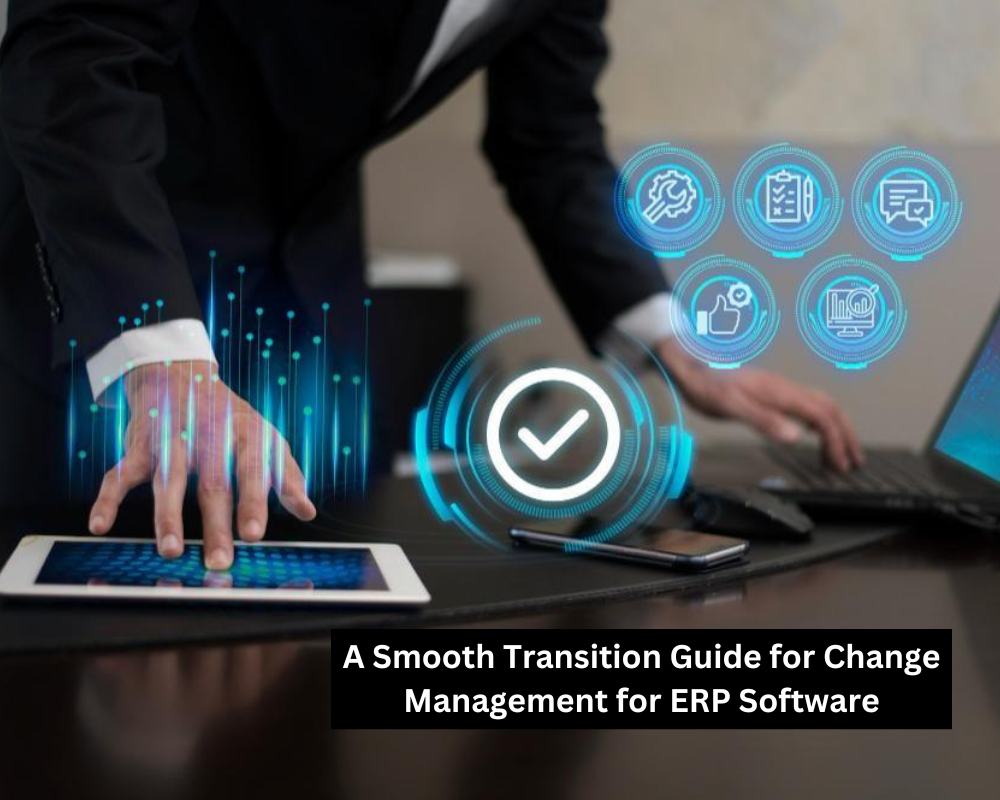Implementing a new ERP software is a big change for the company. It is a tedious task for the company as they have to plan for smooth implementation in advance. Planning executing right change management strategies will minimize risks and ensure seamless implementation. The next thing is to make your business and employees aware of the change that will happen in the company. Together with digital transformation, companies should focus on agility and design thinking. It helps in responding quickly to changing market conditions.
Change Management for Business
Change management in an enterprise is a systematic approach or strategy that is taken to adapt to the transition or changes in an organizational goal, technologies or functions. Changes include internal processes, company culture, infrastructure or underlying technology, corporate hierarchy or other crucial factors or components.
We know that businesses tend to continuously evolve and they have to adapt easily to the changing conditions. In addition, evolution comes with a series of challenges such as technology has to be changed, shift in laws and regulations, get insights on new competitors, or
economic conditions. If the company fails to analyze all these factors, there is a high chance that they will fail drastically.
A study says that 50% of the change management initiatives are unsuccessful. Business leaders and managers should have the skill to plan, coordinate and carry out change successfully.
A change in an organization is of two types – Adaptive or transformational. Here the adaptive changes are slight changes a business makes to upgrade or change its products, processes, workflows and strategies over time. An example for adaptive changes is to hire a new employee to address the increasing demand or work from home policy to attract more qualified job applicants.
Transformational changes are abrupt, huge and a drastic transition for the organization. It will scale up the company and increase its scope. Some examples of transformational changes are launching a new product or new business division, or expanding the business globally etc.
Read: The Future of Android Apps: Emerging Trends and Technologies
Change Management for ERP implementation
Change management for ERP has to be done in a systematic manner. It involves a lot of planning and strategic decision-making to successfully implement the system into the businesses. ERP implementation will cause a huge change in work processes, work practices, roles, and organizational structures. Hence, all these processes have to be planned properly or else the implementation will fail. The managers should ensure if the well-designed software solution is readily accepted by all the employees. They should analyze to involve the right staff and avoid giving surprises to the users.
For ERP implementation, change management enables an organization to be prepared, support and guide users through the transition till they are comfortable with it. Plus, it helps the users to be prepared, motivated and empowered to embrace new organizational changes.
Faulty Change Management
Before going to the strategies or ways to tackle change, let us discuss the symptoms of the faulty change management. Enumerated below are a few reasons why some of the technological implementations fail.
- If the employees are asked to adapt to changes rapidly in a short duration, they become overwhelmed.
- If the management makes the decisions without considering the users feedback, the change is likely to fail.
- If hands-on training is not given to the users the change will fail as communication only will not help the users in adapting to technological change.
- If managers don’t consider the way employees use the technology or how they feel about it or how it impacts their jobs, the change management will fail. Apart from managers focusing on processes and systems, they should look into all these aspects.
- If inadequate information is provided as the project progresses, the investors or the stakeholders will fail to comprehend the timeline, expectations or the type of participation needed from them.
- Miscommunication with the IT team will give rise to a series of challenges.
- If there are disagreements among departments and miscommunication, the change in the organization will fail.
Change Management strategies for successful ERP implementation
1. Engage stakeholders from the beginning
It is vital for the management to involve the stakeholders from the beginning of the project. The customers, vendors and employees are the stakeholders who will be impacted in this implementation project. The main reason to include stakeholders from the beginning is to keep them informed about the change. It is also important to make them aware of why the change is required. This information can be shared by giving training to the stakeholders or through newsletters or emails.
2. Create a communication plan
The creation of a communication plan is the major step for executing the change management strategy. This plan is developed to communicate effectively about the technological change to the users. If a proper communication plan is in place, resistance to change can be avoided.
Without any surprises, every employee in the organization will be informed about the changes.
3. Train all the users
If a new technology is implemented in the organization, adequate training should be given to all the users in advance. This will enable the users to achieve satisfaction with the new change and will boost productivity. Give practical training to all the users by engaging them with the new technology. Training can be provided by conducting training sessions, training manuals or by offering online courses.
4. Monitor and address issues
After providing ample training to the users, it is vital to monitor the progress and address any concerns. In businesses, change can be challenging and can create a lot of resistance. If need arises, additional training can be provided to the users to make them proficient with the new system. This will yield increased productivity and the mission of ERP implementation will be a success.
Conclusion
Finally, we have learned in detail about change management and its implications in an organization. Effective change management strategies are a requisite for smooth transition to accept new technologies. Plus, it is vital to develop early communication plans for the stakeholders to keep them informed about the transformation. With adequate training and monitoring progress, the change management can be successfully implemented in the organization. ERP solutions can be implemented without any issues with well-planned change management strategies.
Author’s Bio:
Sneha Rakte is a skilled communication specialist who possesses a strong ability to understand and meet the needs of clients. Currently, Sneha is employed at Sage Software Solutions, a prominent company renowned for providing top-notch ERP Software and CRM solutions to small and medium-sized enterprises in India.



